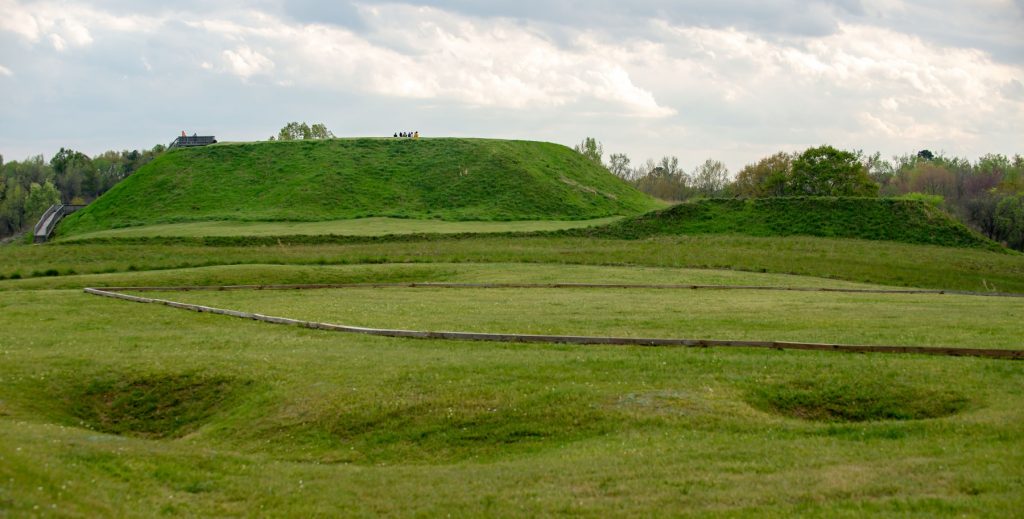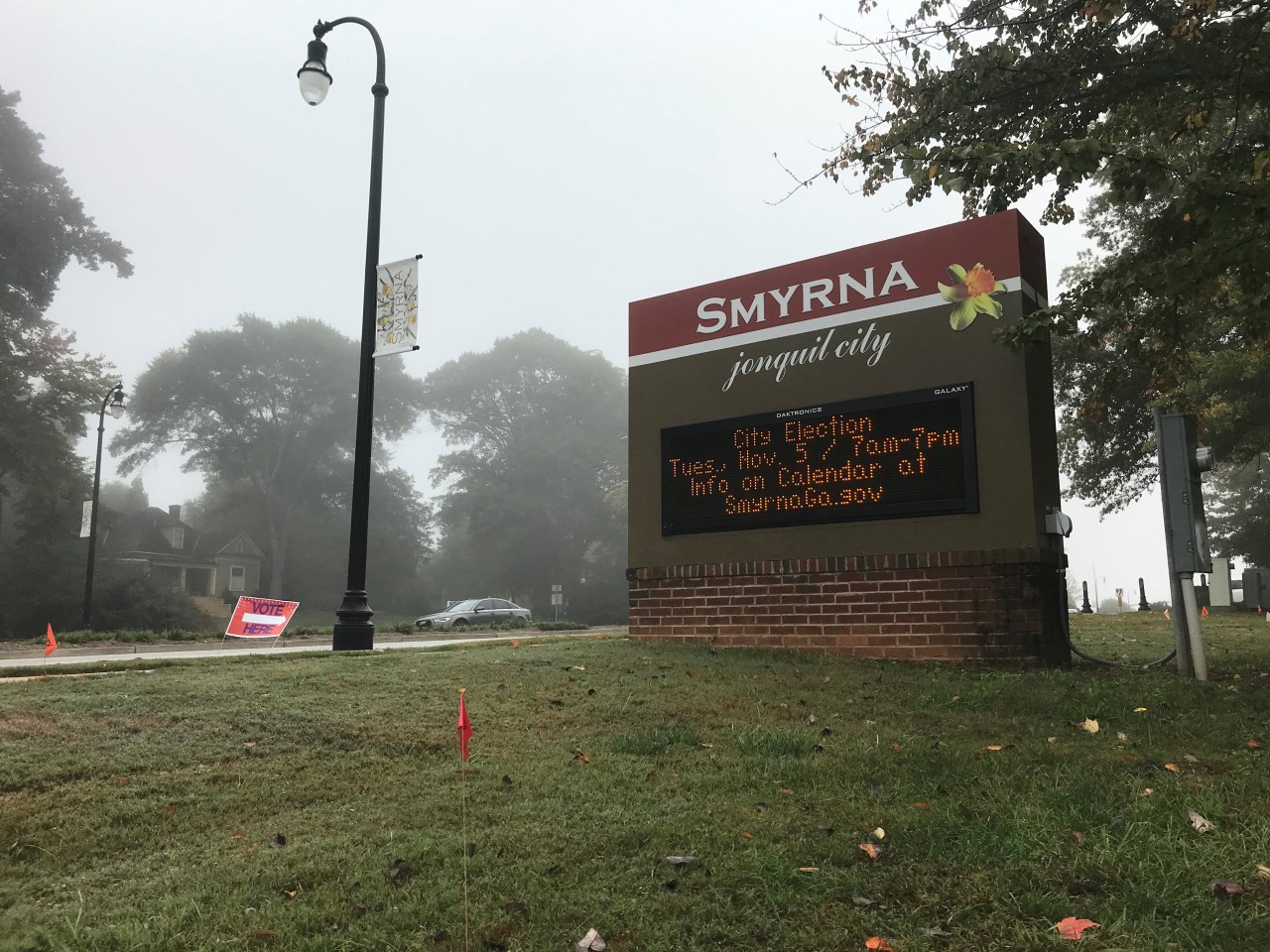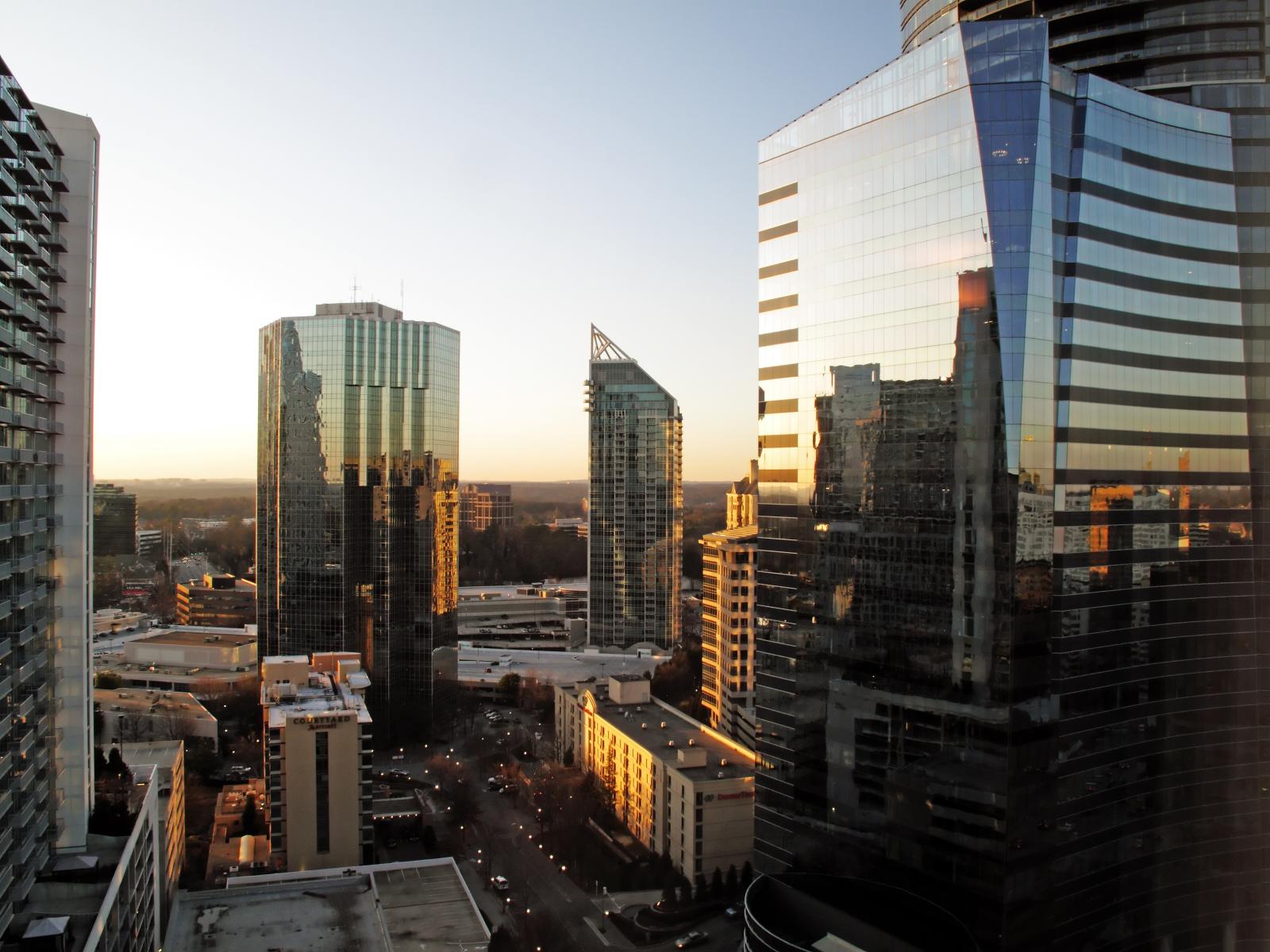In Middle Georgia, A Park With Deep Human History Finally Gets To Grow
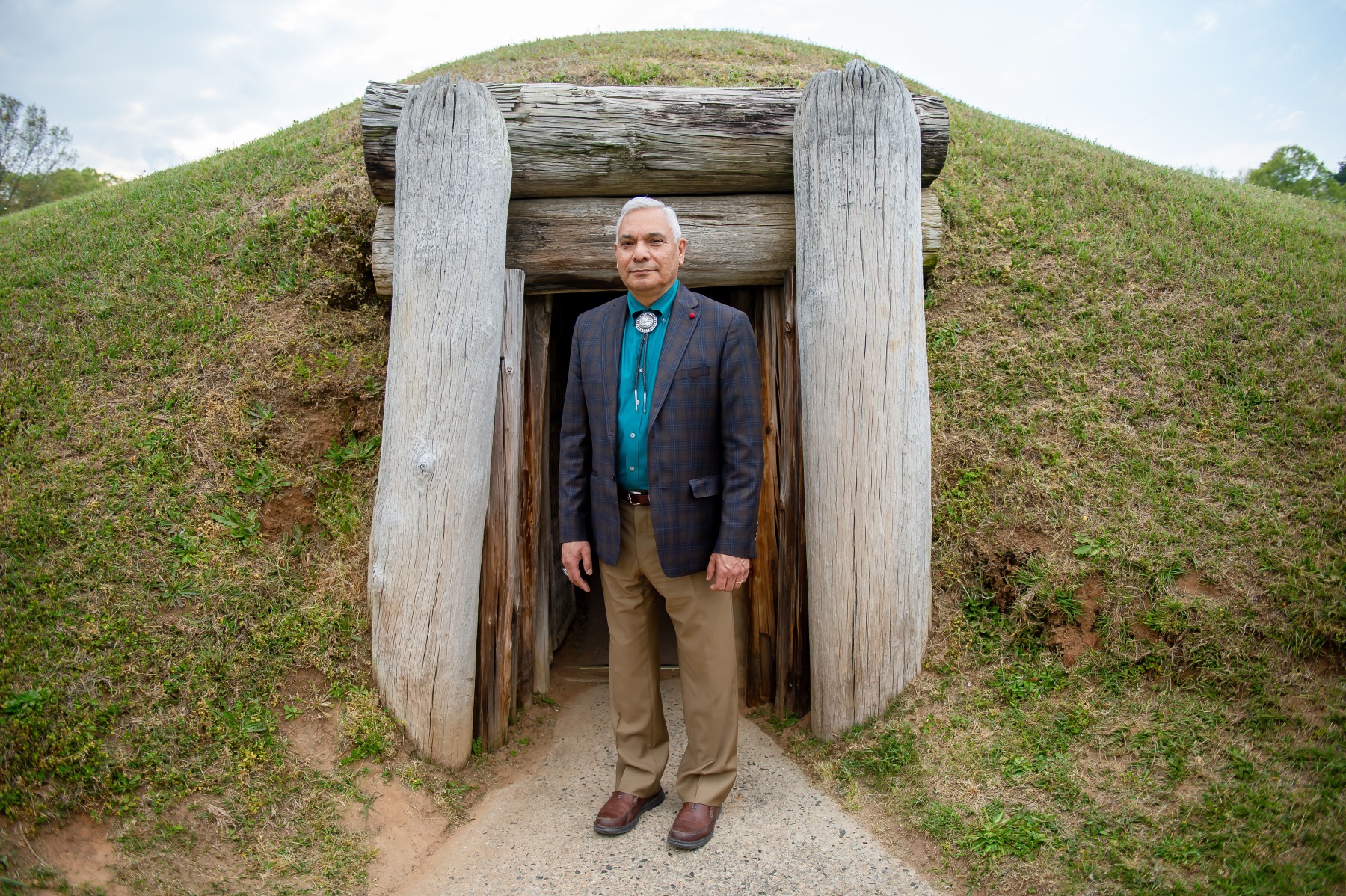
Bita Honarvar / WABE
At Ocmulgee Mounds National Historical Park in Macon, there’s evidence of human history going back 17,000 years. There were ice age hunters there, and Mississippian mound builders. It was home to the Muscogee people until the U.S. government drove them out.
In its more recent human history, the place got caught for a couple years in congressional politics, with an end result that’s good news for the park: President Donald Trump signed a bill in March that expands it, nearly quadrupling the park’s boundaries.
The park overlooks the Ocmulgee River. It’s in an ecologically rich place – where flora and fauna of the piedmont and coastal plain meet. The steep grassy hills that park visitors explore are mounds built about 1,000 years ago. According to the park, powerful people lived up on top of the mounds, looking down at the river below.
The expansion will allow the park to bring in other parts of the place’s history – lower elevation fields where, presumably, less powerful people lived and farmed.
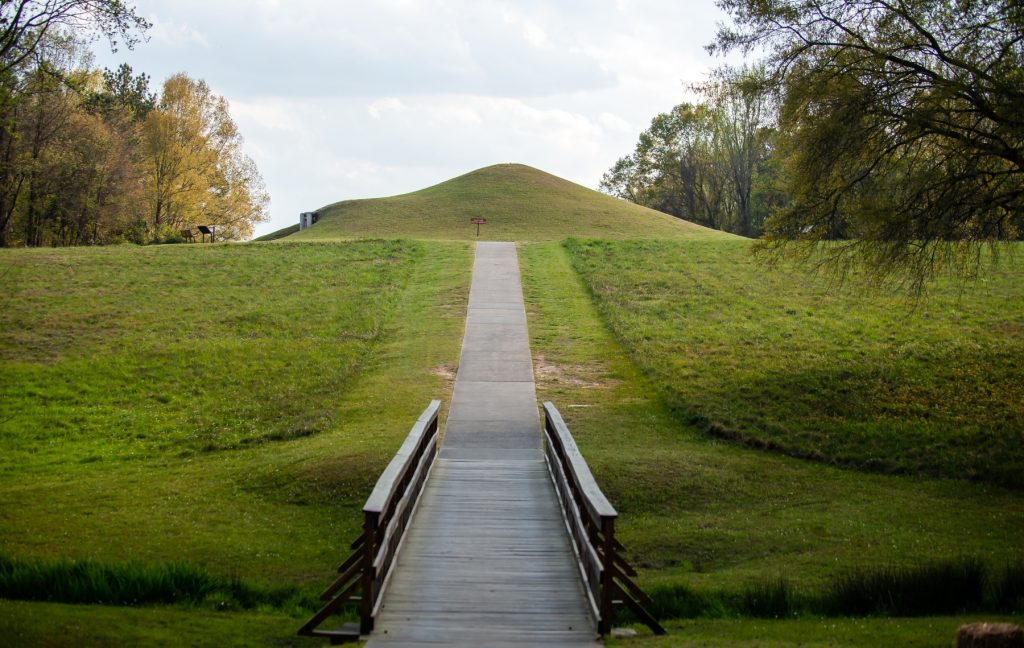
“This, to us, is probably one of our most sacred places because it was our home,” said James Floyd, principal chief of the Muscogee (Creek) Nation. “It just has a certain spirit about it to all of us who come from the tribe. It’s just a good peaceful feeling.”
The tribe is in Oklahoma now, forced there in the 1800s, but Floyd said coming to the park feels like coming home.
Ducking through a long hall into the earth lodge, a broad, circular room now buried under dirt and grass, Floyd let out a sigh.
“We’re so grateful this remains, it’s just amazing,” he said.
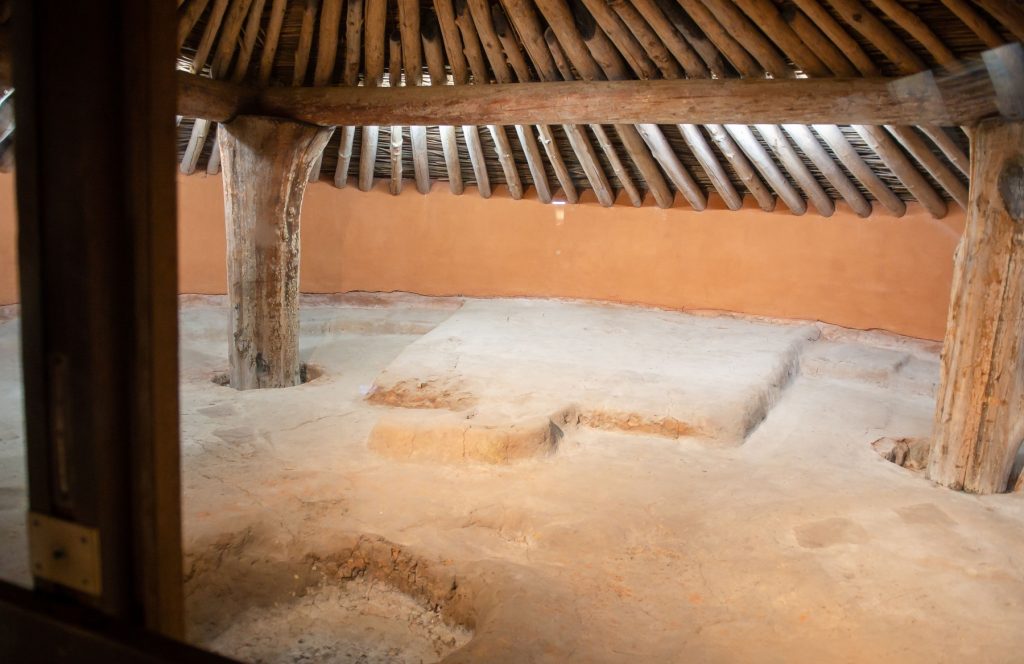
This place wasn’t always protected though. In the mid-1800s, railroads cut through the mounds here twice.
“It breaks my heart,” said Ocmulgee Mounds National Historical Park Superintendent Jim David. “I’d love to have seen this site before the railroads cut through, to see what they destroyed. But there just had to be a phenomenal amount of cultural material just gone forever.”
It wasn’t just the railroads wrecking things.
In the late 1800s and early 1900s, “Apparently it became a popular Macon activity to go out to the funeral mound on a Saturday afternoon, and dig into it, see what you could find,” David said.
“The funeral mound is a fraction of its former self,” he said.
But by the 1930s, local boosters in Macon were rallying to make the area a park. The federal government didn’t offer any money to help buy the land, so people in Macon raised it themselves.
They envisioned a 2,000-acre park, but in 1934, in the middle of the Great Depression, they couldn’t buy as much property as they’d hoped. “Money is not flowing wildly,” said David.
The past few years, there’s been a renewed local effort around this park to expand its boundaries. But over and over again, Congress failed to pass a bill that would do that.
David, who’s been the superintendent for more than 20 years, started to think about retirement.
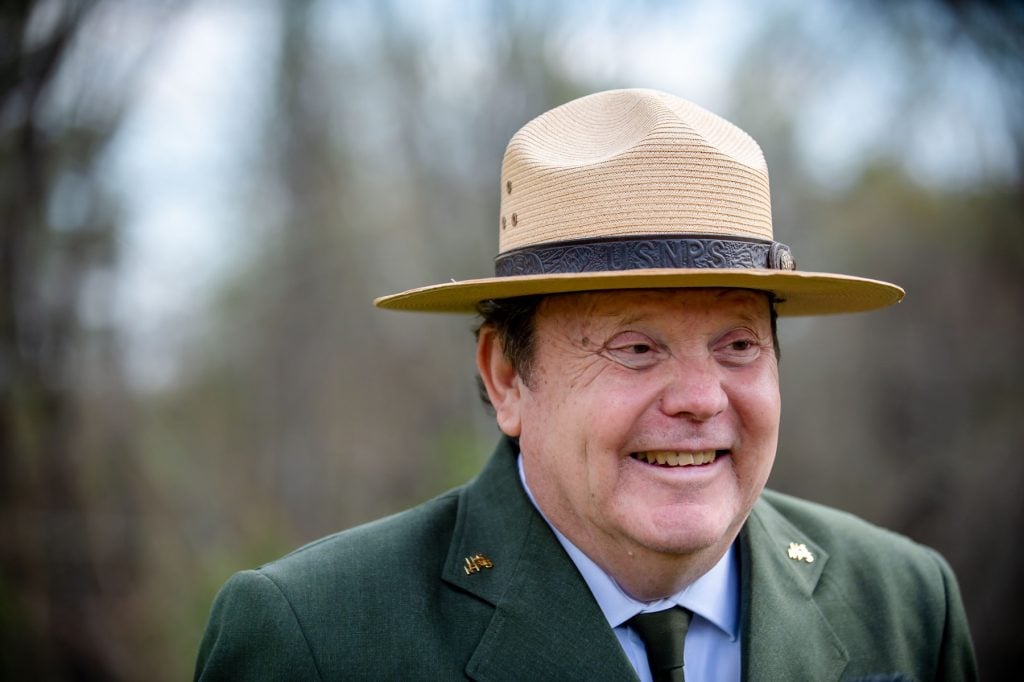
Then, this year it finally happened.
The bill to expand this park got rolled into a much larger public lands bill that creates and expands parks around the country – including a couple others in Georgia. Congress allowed the park to grow up to around the size that had originally been proposed back during the Depression – though the boundary expansion doesn’t mean it happens automatically, just that as land becomes available, the park would be allowed to add it.
Related: Kennesaw Mountain On The Verge Of Adding 8 Acres — And More History
The name of the park also changed, from Ocmulgee National Monument, to Ocmulgee Mounds National Historical Park.
Now David says he plans to retire in May.
“I feel very, very good about walking out with that off my checklist,” he said.
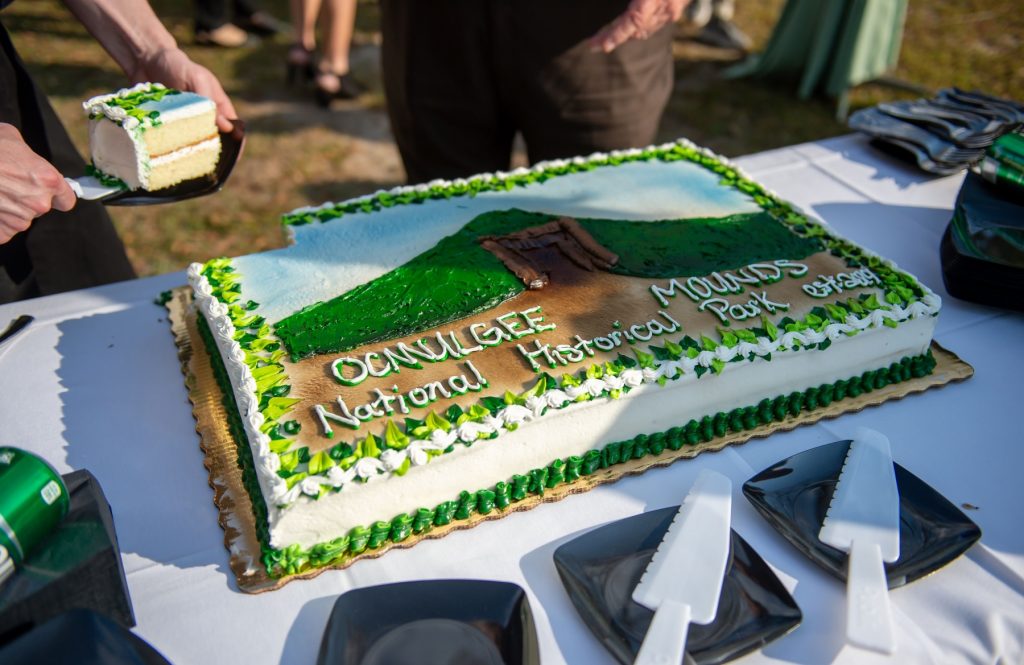
Principal Chief James Floyd said he hopes the Muscogee (Creek) Nation will have more of a presence here going forward. David has worked to reach out to the tribe, and there is already a big annual gathering, but Floyd envisions more: working on archaeological studies, and on plant identification. And, he said, just letting people know the Muscogee people are still around.
“Sometimes they think, ‘Well they just left, we don’t know what happened, or they’re extinct.’ And we’re not extinct. We’re the fourth-largest tribe in the United States. But we understand. So we need to come back and be a part of Georgia and Alabama and Florida,” he said.
Melissa Harjo-Moffer, archivist for the Muscogee (Creek) Nation, said she feels a connection when she visits, but it’s a lonely feeling.
“I could almost imagine or envision the people everywhere, and everybody speaking the Mvskoke language,” she said.
Harjo-Moffer and Floyd came from Oklahoma to the park last month along with a few others for an event celebrating the expansion; the tribe had pushed Congress to help make it happen.
“Hesci,” Floyd told the crowd in the Mvskoke language. “Hello, good afternoon everyone.”
He told the gathering that he’s happy the legislation passed, and he hopes to see the park continue to grow.
“I hope that we all understand the historical significance here and we always keep that near and dear to us. Because when we come back, to us, it’s coming back home,” he choked up. “When we look to the trees and the water, it’s really in our blood.”
